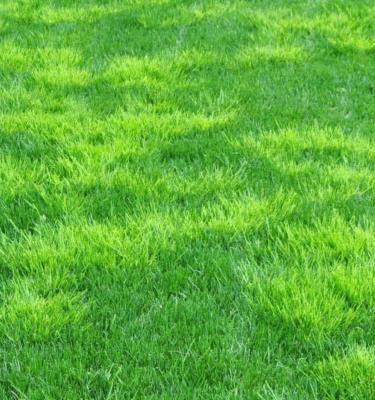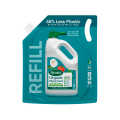

Winter Grass
Winter grass is a widespread annual weed found in the garden and presenting a particular problem in lawns. There is only one winter grass type, but it has many common names:
- Annual bluegrass
- Annual grass
- Annual mallow grass
- Annual meadow grass
- Causeway grass
- Common meadow grass
- Goose grass
- Low spear grass
- Suffolk grass
- Walkgrass
The botanical name of winter grass is Poa annua, although Poa infirma is occasionally used too. Part of the Poaceae family, Poa annua is just one species in a wider group of over 12,000 other grasses. The name Poa comes from the Ancient Greek word for “fodder”, with many plants in this large plant family having an agricultural use.
Winter grass is a fast grower and seeds prolifically to spread itself further. The plentiful flowering of winter grass can contribute to the allergic reaction known as ‘hay fever’.
Although it is called winter grass, it is a problem all year round. It tends to spread more in the cooler months of autumn and winter, but is a highly adaptable weed which is present and active at all times. It is a low growing weed with similarities to other grass, so can easily be missed or mis-identified.
How to Identify Winter Grass
So, what does winter grass look like? Like many other grasses, winter grass is mostly light green in colour, with leaves which are soft, short and flat, with blunted tips. It has a clumpy habit, with tufts of lush growth.
Winter grass can flower all year round in the right conditions, but the flowers are most apparent in winter and spring. These are grey-green, sometimes with a slight purple tinge. These flowers are at the tips of the branches, giving each group of flowers (‘panicle’) an open, triangular shape. These quickly produce fluffy seed heads which are very visible on the ends of the Christmas tree-like branches.
Stems can reach up to 30cm in height, although in a well tended lawn they will be much shorter than this. The stem has a noticeable flattened sheath around it.
The plant has shallow, fibrous roots which are easily lifted from the soil. It does not spread with stolons or runners, like many other grasses.
Recognising the Symptoms of Winter Grass
Winter grass stands out among cultivated grass, putting up flower- and seed-heads which look quite different to the rest of the lawn. This can spoil the even and uniform appearance which many of us strive to attain in a well kept lawn.
This weed competes with the main grass for nutrients and water. Given the chance, at full growing strength it will out-do the main lawn. It has a short lifecycle, so when the clumps of winter grass die off, the lawn will be left with brown or bare patches. What we end up with is more an incomplete jigsaw than a masterpiece green lawn.
How to Get Rid of Winter Grass
Winter grass has a short lifecycle of just six weeks. This means it germinates, grows, flowers and produces new seed in that short period of time. The key to killing winter grass it to disrupt this rapid lifecycle of seed creation and dispersal.
The problem can and should be tackled all year round to keep on top of it. A lawn mower is not very effective in controlling winter grass, as it will not reach any seeds close to the soil surface. An even more manual approach is usually best to get rid of this weed.
A hand fork works well in lawns, loosening individual winter grass plants which should easily pull up from the soil beneath. Get rid of clumps, but do not compost the weed as seeds will germinate again. After digging out individual weeds from the lawn, top dress to even out the surface and then reseed. Use Scotts Lawn Builder™ + Organics Lawn Topdress Mix and Underlay Soil, followed by Scotts Lawn Builder™ Seed & Feed Sun & Shade Lawn Seed or Scotts Lawn Builder™ Lawn Thickener Lawn Seed.
Check flower beds, borders, and cracks in the patio or path for further specimens, as these will also produce seed. Pull by hand, or use a hoe to sever the green growth from the roots.
Weed killer is often not effective in controlling winter grass, as widely-available commercial products tend to target broadleaved weeds. There are some herbicides which target non-broadleaved weeds such as Poa annua, but read the label carefully to be sure. The most effective will be those winter grass killers which prevent the seeds from germinating, known as ‘pre-emergent’ herbicides. After treating with weedkiller, repair bare spots in the lawn with Scotts Lawn Builder™ Patch Magic.
Whichever approach is taken, expect to act repeatedly over the course of several years before winter grass is completely under control.
How to Prevent Winter Grass
All lawns are better able to fend off weeds when they are looked after regularly.
Feed the lawn so that it is healthy enough to out compete winter grass. Use Scotts® EasyGreen Broadcast Fertiliser Spreader to distributes granular feed evenly, such as Scotts Lawn Builder™ + Organics Lawn Food & Soil Improver. Alternatively apply a liquid product such as Scotts Lawn Builder™ 3in1 Weed, Feed & Green Up Liquid Lawn Fertiliser. Avoid using products which add lime, as winter grass prefers alkaline soils and will enjoy the extra help.
When mowing the grass, be sure to collect clippings so that any seeds are not left to germinate. Avoid watering the lawn in dry spells, as the shallow roots of winter grass means it does not tolerate drought as well as other grasses. Reducing shade and increasing exposure to sun will also help other grasses to thrive whilst the winter grass struggles more than most when the soil begins to dry out.












